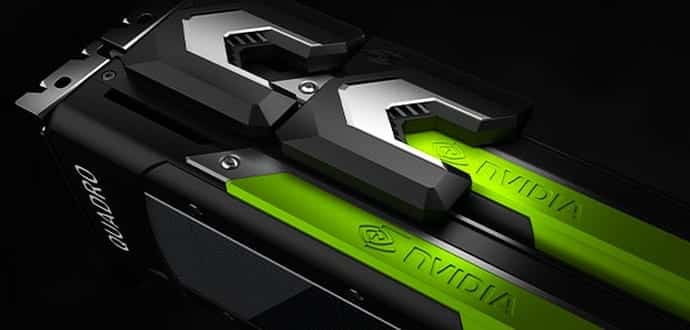NVIDIA launches Quadro GP100 graphics card having 16GB of HBM2 video RAM
NVIDIA has released its new Pascal-based Quadro graphics cards along with the flagship Quadro GP100 at SOLIDWORKS World annual trade show in Los Angeles.
“Professional workflows are now infused with artificial intelligence, virtual reality, and photorealism, creating new challenges for our most demanding users,” said Bob Pette, vice president of Professional Visualization at NVIDIA. “Our new Quadro lineup provides the graphics and compute performance required to address these challenges. And, by unifying compute and design, the Quadro GP100 transforms the average desktop workstation with the power of a supercomputer.”
The most interesting high-end product in NVIDIA’s updated Quadro family is the GP100. It features 16GB of second generation high bandwidth memory (HBM2), so that users can carry out simulations during the design process and gather realistic multiphysics simulations faster than ever before. It also has the latest superfast two-way NVLINK interconnect, which helps get data in and out of the GPU faster. NVLINK allows for a pair of the GPUs to be combined for 32GB of HBM2 on tap in a single PC.
The new Quadro GP100 offers all of GP100’s core functionality, including ECC memory, half-speed FP64, and double-speed (packed) FP16 instructions. It also provides ‘unprecedented’ double precision performance, going over 5TFlops which is nearly triple the speed of the Quadro K6000. NVIDIA says that single precision (FP32) performance is 10 TFLOPs, doubled to 20 TFLOPs when in half precision (FP16) mode. The Quadro GP100 has four DisplayPort 1.4 slots and one DVI slot. NVIDIA sees this card being used in VR applications and for deep learning tasks in Windows and Linux.
NVIDIA’s other desktop Quadro cards powered by Pascal include the P4000, P2000, P1000, P600, and P400. They complete the entire Pascal-based Quadro line-up, including the previously announced P6000 and P5000 for desktop, and mobile GPUs.
The Quadro P400 and P600 are aimed at mainstream users of tools such as Photoshop and Illustrator, while the P1000 and P2000 are for more demanding users of Photoshop and Illustrator tools – or entry-level users of video or animation software such as 3ds Max, After Effects, Premiere Pro, Maya or Nuke. Further, there is the P4000, which has ‘VR Ready’ certification for powering the likes of Oculus Rift and the HTC Vive (including creating content for those platforms). These GPUs don’t have the NVLINK interconnect or HBM2 memory.
Quadro P4000 |
Quadro P2000 | Quadro P1000 | Quadro P600 | Quadro P400 | |
| GPU | GP104 | GP106 | GP107 | GP107 | GP107 |
| FP32 CUDA Cores / GPU | 1792 | 1024 | 640 | 384 | 256 |
| Base Clock | ? | ? | ? | ? | ? |
| GPU Boost Clock | 1480 MHz | 1470 MHz | 1400 MHz | 1430 MHz | 1170 MHz |
| FP32 TFLOPS (SP) | 5.3 | 3.0 | 1.8 | 1.1 | 0.6 |
| Texture Units | 112 | 64 | 32 | 32 | 32 |
| ROPs | 64 | 40 | 40 | 24 | 16 |
| Memory Interface | 256-bit | 160-bit | 128-bit | 128-bit | 128-bit |
| Memory Size | 8GB | 5GB | 4GB | 2GB | 2GB |
| TDP | 105 W | 75 W | 47 W | 40 W | 30 W |
| Manufacturing Process | 16nm | 16nm | 16nm | 16nm | 16nm |
Pricing for the new Quadro cards has yet to be confirmed, with availability scheduled for March. Check out for more information from NVIDIA’s official press release.

